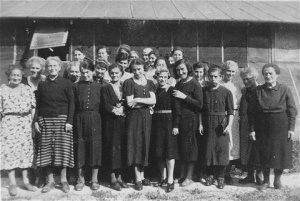Column
Raymond Chandler once famously advised writers that if their story lacked tension, introduce a man with a gun.
This is another way of telling your protagonist, “Think you’re going to get what you want? Forget it.” Or, as I remarked in my last post (December 22, “Dance or Dangle?”), “No, you’re not going to get it–and furthermore, you’re in even greater trouble than you thought.”
Not only thrillers benefit from the “no–and furthermore.” Every novel I’ve praised on this blog, no matter what genre, succeeds in part because the author has used this powerful technique to its fullest. Every one I’ve disliked fails because the author either presented no credible barriers for the protagonist to overcome or made them too easy. It’s called constantly raising the stakes, and it’s not as simple as it sounds.
Sure, you can make the mountain too tall to climb, the door too thick to break down, the road too dark to travel, or the weather too miserable to allow watching the bad guys. You can have the villain get to the gold first or seduce the woman who was really meant to be with the hero. All these may be useful, even necessary.
But I think raising the emotional stakes counts a lot more. What the characters believe, their dearest principles, must be threatened. The threat shouldn’t only be external, as with the man with the gun; but internal, as with what the character feels about herself. Those feelings usually include the fallout of shifting perceptions, when the character realizes he’s been lying to himself or hurt someone. That can be as potent, if not more, than any physical apocalypse.
Consider the following examples. In The Lie, Daniel, a soldier returning from the First World War, dreams of being reunited with his first love, whom he’s known all his life. Does he manage? No. He finds out that in his absence, she’s married, had a child, and been widowed. Author Helen Dunmore further complicates this already awkward triangle by making the late husband a soldier too, so that Daniel has to sympathize with him, even as he resents the rivalry.
In Blood & Beauty, as soon as Lucrezia Borgia finds a man who truly cares for her–as opposed to using her as a sexual or political object–her father and brother contrive to get rid of him. Sarah Dunant uses these brutal setbacks to disillusion Lucrezia about her male relatives (whom she’s always worshiped), the possibility of love, and her place in the world.
Thomas Keneally’s Daughters of Mars are sisters in blood and profession, as nurses who may or may not have hastened their mother’s death to relieve her sufferings from cancer. The younger sister, Sally, has always wanted to be closer to the elder, Naomi. But they’ll forever be estranged unless and until they can speak of what happened to their mother–and of course, they can’t.
Conclusion? I find that the books that have the most emotionally powerful “no–and furthermores” feel inherently important, whereas those that don’t fail to move me. The books I put aside are generally those whose protagonists face external barriers that are merely circumstantial and exert too little pull.
What do you think? What books compel you that way, or don’t?
Disclaimer: I borrowed my reading copies of these books from the public library.
More fine print: This week, I’m on vacation, so will post only once.





